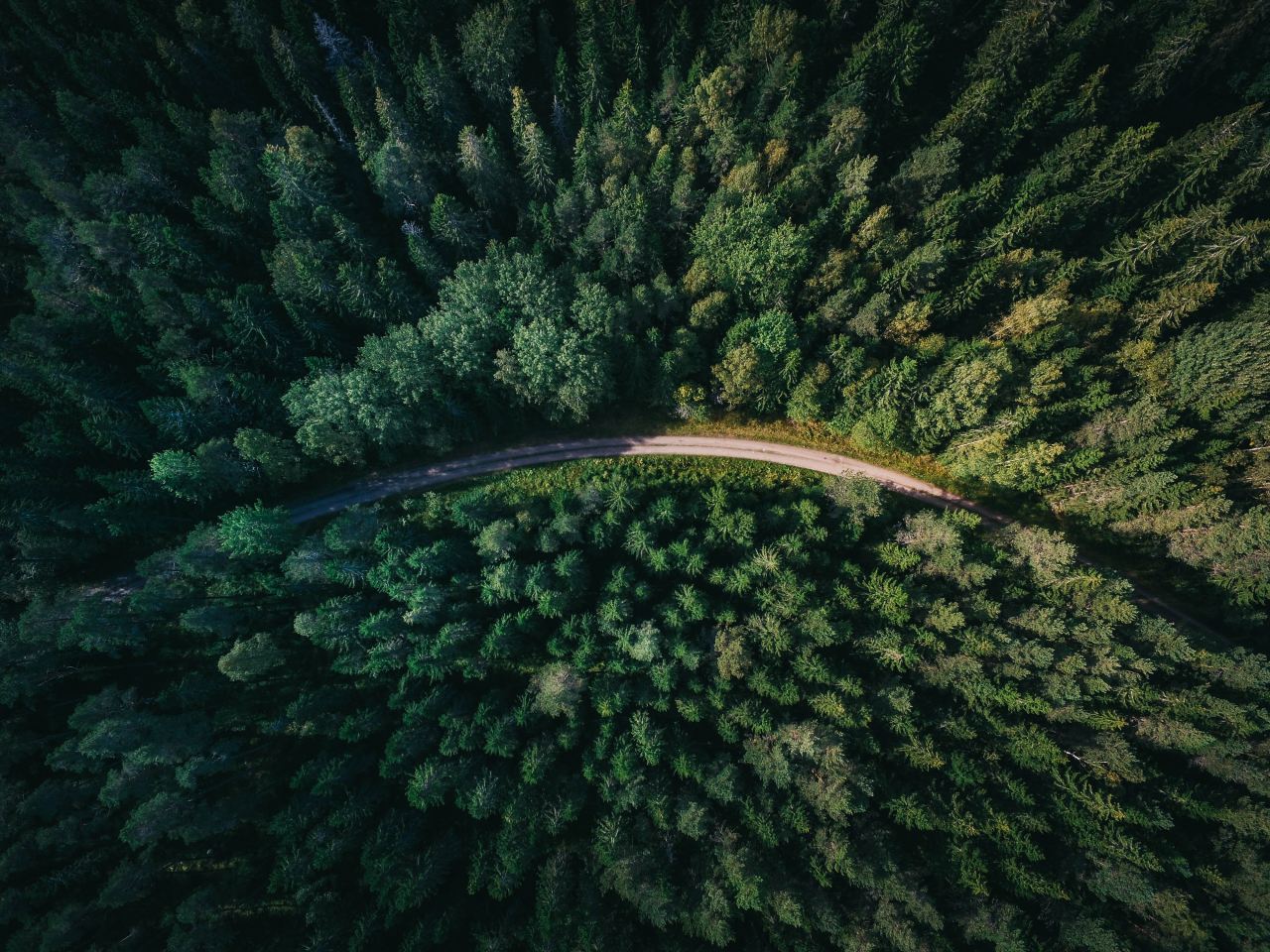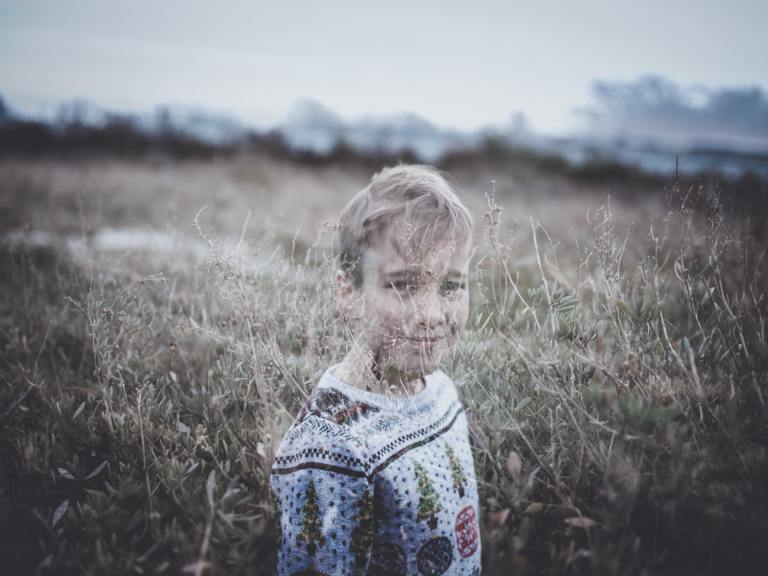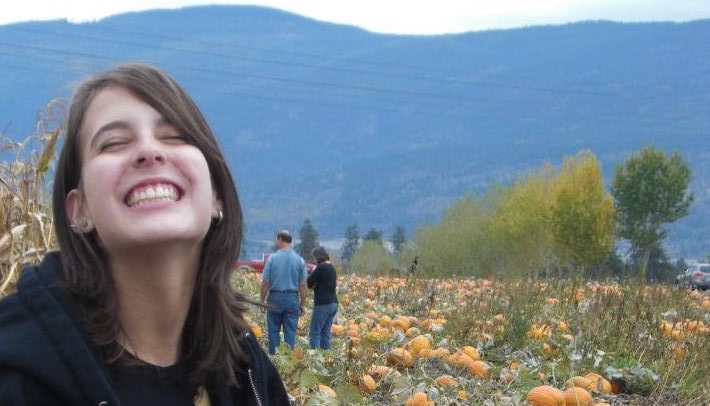My Journey Through The Woods With A Goat Yoga Instructor
Given how far it is from a big city or freeway, I hear no traffic noise at all—only the chirpy tweeting of birds, the occasional caw of ravens and crows, the gentle sounds of a flowing creek.

Names changed to protect confidentiality.
After a slightly serpentine and bucolic ride up to Marie’s house in the Aptos hills, I park in front of her rustic dwelling to find my phone has no service.
Leaving the car to inform her of my arrival, I pass by dogs and goats along the way. Two friendly chocolate labs greet me at the door. I hear chickens clucking from somewhere behind the fence. A woman with chestnut skin tone and blond-brown hair cut just past her chin answers the door dressed in a flowy teal shawl and black lounge pants.
“Hi!” she greets me. Small blue eyes glint behind glasses with panther-black frames. “So I still need a few minutes to get ready. But you’re welcome to meet the animals in the meantime.”
She adds, “I tip well,” as reassurance that the waiting time will not go uncompensated.
While she continues getting ready, I take in the peaceful surroundings. A smattering of small orange flowers nestled amidst golden weeds sway in the breeze. Black birds with wings outstretched like weightless sheets of tissue paper fall like hang-gliders before catching themselves, showing off an enviable balance between freedom and discipline.
In the distance, tan jagged rocks jut out from the rolling hills. It smells woody, and also like flowers, and also slightly like butter. There are worse places to wait.
Once Marie is ready, we set off down the hill towards the remote town of Boulder Creek, tucked into the foot of the Santa Cruz mountains. It will be about a 45 minute drive.
“What’s there?” I ask, curious. I’ve never heard of the town.
“Small concert at a friend’s place,” she replies, picking (goat? Dog?) hair off her shirt. “I actually used to live there but moved out to Aptos at the end of last year.”
Her shawl covers her like a blanket while she naps for the first 20 minutes of our ride, during which we drive down paths that coil through a forest of trees, passing occasional one-road towns every few miles or so.
Marie wakes up and wipes her eyes, asking if we can stop for coffee. She knows of a place in the woodsy town of Ben Lomond that’s on the way. “It’s this Italian cafe tucked into the woods. The owners are so sweet. Straight from Italy, the family. They grow all their own food and home-school their kids.”
After I say sure, we get to talking about goats. I learn lovely things about her little friends, such as that when goats give birth it’s called “kidding,” and that they are light sleepers who will generally startle awake at any sound. She tells me they’re intelligent and curious, with a constant desire to explore and investigate unfamiliar objects or surroundings.
“Fun fact, they were also some of the first animals to be brought over to America. They rode the Mayflower with the earliest European settlers of our country,” she explains to me.
I’m enlivened to discover not only that Marie teaches goat yoga classes at her farm, but that goat yoga is becoming a popular phenomenon throughout the Bay Area (the year is 2017).
When she tells me that the goats climb on top of people when they’re doing the poses, I picture a goat pawing a yogi’s back. Cobra and Superman poses would be the easiest for them to do this on, I decide. They’d really have to stretch their little legs to reach the back of a person in Downward Dog. And goat contact during Happy Baby would probably hurt, particularly if the hooves decided on your exposed stomach as exploratory ground (the pose is supposed to make you feel like the carefree infant post labor trauma, not the besieged mother giving birth).
Marie says she also offers animal therapy with the chickens, dogs, goats, and bunnies at her farm.
I pull into a dirt parking lot next to the family-owned business when we arrive in Ben Lomond. Dwarfed by the countless redwood trees extending high into the sky, the cafe’s got a quaint wooden cottage feel that aptly pairs it with its foresty surroundings. A small stone fountain gently flows next to umbrella-shaded tables on the front patio.
As I wait with the window rolled down, I breathe in the fresh smell of campfire and pine and am reminded of days spent at summer camp as a child. Marie knocks on my window, holding up an espresso in an actual coffee mug, with a little tray underneath to contain any spillage.
“Let me know once you’re done and I’ll return it,” she offers, after I roll down my window to accept it.
I laugh a little on the inside at the unconventionality of it all, then look down at the coffee and start downing it.
Once finished, we’re on our way again. Marie recounts stories of having lived all over the world, including in countries like Haiti and Malta.
After dropping her off, I leave my car to wander Boulder Creek.
The whole town feels like summer camp, or like a few streets have been carved out from a regional park—black pavement absent of sidewalks. Or like a handful of houses were thrown down from the sky by a higher power, then landed in the woods. I walk past treehouses, motorboats parked outside of homes, trampolines in front yards.
Given how far it is from a big city or freeway, I hear no traffic noise at all—only the chirpy tweeting of birds, the occasional caw of ravens and crows, the gentle sounds of a flowing creek.
At the end of my walk I look down at my phone and see that Marie is true to her word: she’s left a $35 tip in the app.
Eight weeks later, two friends and I sign up for a goat yoga class in Santa Rosa. I thank Marie for the inspiration—even if next time, it might be more economically feasible to just pull my car over the next time I spot goats when driving down a country road, then make my own (DIY) goat yoga class there (I imagine I’d receive more one-on-one attention too—prevent the goats from feeling spread too thin).




